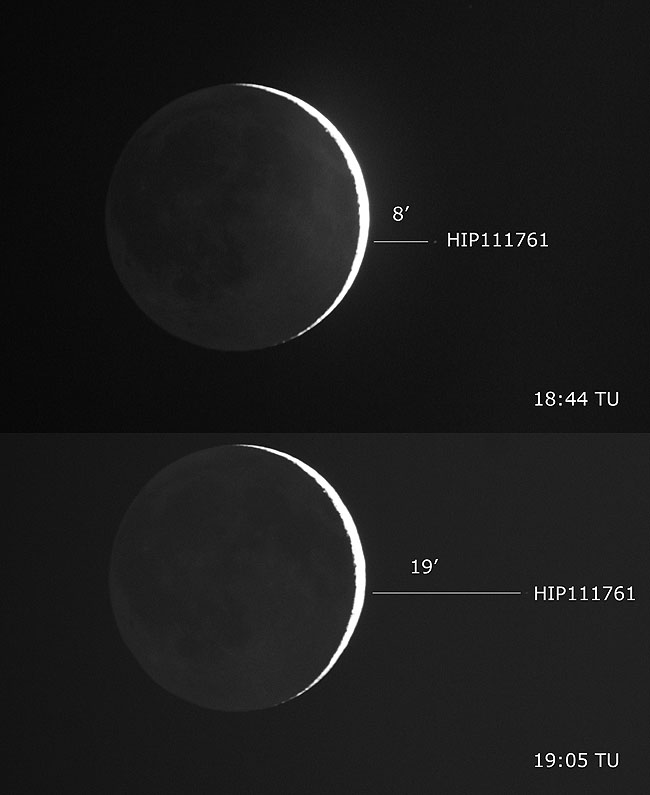Difference between revisions of "February 11, 2008"
| Line 1: | Line 1: | ||
__NOTOC__ | __NOTOC__ | ||
=Scooting Along= | =Scooting Along= | ||
| + | <!-- Start of content --> | ||
<!-- ws:start:WikiTextHeadingRule:0:<h1> --> | <!-- ws:start:WikiTextHeadingRule:0:<h1> --> | ||
<br /> | <br /> | ||
| Line 19: | Line 20: | ||
<p><b>Yesterday's LPOD:</b> [[February 10, 2008|Airy Swirl]] </p> | <p><b>Yesterday's LPOD:</b> [[February 10, 2008|Airy Swirl]] </p> | ||
<p><b>Tomorrow's LPOD:</b> [[February 12, 2008|Glistening]] </p> | <p><b>Tomorrow's LPOD:</b> [[February 12, 2008|Glistening]] </p> | ||
| + | <!-- End of content --> | ||
{{wiki/ArticleFooter}} | {{wiki/ArticleFooter}} | ||
Revision as of 20:10, 7 February 2015
Scooting Along

image by Paco Bellido
Yesterday I took some pictures of a 39 hours Moon and I noticed a star near the limb, some minutes after the star was a bit farther. We see the Moon rising on the East and setting on the West, most of the apparent motion of the Moon across the sky is the result of Earth rotation, but the Moon itself also moves, about 4% of the apparent motion of the Moon across the sky is due to the Moon's movement in its orbit. To an observer on Earth, the Moon takes about 2 minutes to move its own diameter to the west. From one night to the other the Moon travels about 13 degrees to the East. This motion is quite noticeable if you measure the apparent distance to a fixed star with a short time span.
Paco Bellido
Related Links
Paco's website
Yesterday's LPOD: Airy Swirl
Tomorrow's LPOD: Glistening
COMMENTS?
Register, Log in, and join in the comments.



